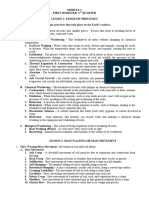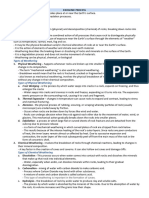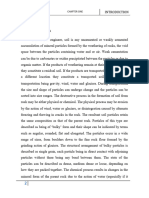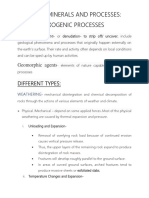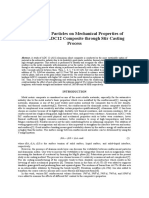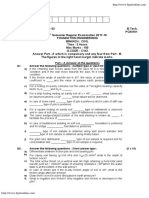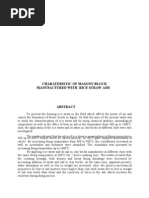0 ratings0% found this document useful (0 votes)
Stephan Marshak
Stephan Marshak
Uploaded by
Ankit Narwala brief introduction.
Copyright:
© All Rights Reserved
Available Formats
Download as PDF, TXT or read online from Scribd
Download as pdf or txt
Stephan Marshak
Stephan Marshak
Uploaded by
Ankit Narwal0 ratings0% found this document useful (0 votes)
a brief introduction.
Original Title
stephan marshak
Copyright
© © All Rights Reserved
Available Formats
PDF, TXT or read online from Scribd
Share this document
Did you find this document useful?
Is this content inappropriate?
a brief introduction.
Copyright:
© All Rights Reserved
Available Formats
Download as PDF, TXT or read online from Scribd
Download as pdf or txt
0 ratings0% found this document useful (0 votes)
Stephan Marshak
Stephan Marshak
Uploaded by
Ankit Narwala brief introduction.
Copyright:
© All Rights Reserved
Available Formats
Download as PDF, TXT or read online from Scribd
Download as pdf or txt
You are on page 1/ 7
#Ch05 InterludeB-Stephan Marshak
Sediment,broadly defined, consists of loose fragments of rocks or
minerals broken off bedrock,mineral crystals that precipitate directly
out of water,and shells or shellfragments. The materials in sediments
ultimately came from the weathering(physical And chemical break-
down)of pre-existing rock.Sediments form a veneer, or cover, over bed-
rock.This cover’s thickness ranges from 0 km,in places where bedrock
crops out at the Earth’s surface, to 20 km, in rapidlysinking basins.
Some sediments transform into soil, which may serve as a substrate
for plants.Sediment-An accumulation of loose mineral grains, such
as boulders,pebbles,sand,silt, or mud, that are not cemented together.
Weatherin:Forming Sediments-Rock exposed at the Earth’s surface
sooner or later disintegrates and crumbles away, due to weathering.
Weathering refers to the combination of phenomena that corrode and
break up solid rock, eventually transforming it into loose debris. The
process also produces ions that dissolve in surface water and groundw-
ater.Weathered rock may look discolored, or rough,compared with un-
weathered or fresh rock.1Physical weathering,also called mechanical
weathering, breaks intact rock into unconnected grains or chunks
known as clasts,which come in a range of sizes.Geologists may refer to
an accumulation of clasts as debris or detritus.Many phenomena contr-
ibute to physical weathering.1.1Jointing-A joint is a natural crack in
rock—the formation of a joint separates one pieceof rock into two separ-
te pieces.Almost all rock outcrops contain joints.For example,sedimen-
tary rock layers tend to break into rectangular blocks bounded by joints
on the sides and layer boundaries above and below, and large granite
plutons typically split into onion-like sheets along exfoliation joints that
lie parallel to the mountain face. Jointing effectively breaks bedrock
into many separate blocks, which, when exposed on a slope, eventually
tumble downslope,fragmenting into smaller pieces asthey fall.The res-
ulting chunks may collect in an apron of talus, the rock rubble at the
base of a slope, or may be carried away by rivers or glaciers at the
base of a cliff.1.2FrostWedging-When water trapped in a joint free-
zes,it forces the joint open and may cause the joint to grow.Such frost
wedging helps break blocks free from intact bedrock.1.3SaltWedging-
In arid climates, dissolved salt in groundwater precipitates in open
pore spaces in rocks, forming crystals that push apart the surround-
ing grains.This process weakens rock so that when exposed to wind
and rain,the rock disintegrates into separate grains.The same phen-
omenon happens along the seacoast,where salt spray percolates into
rock and then dries.1.4RootWedging-As roots grow,they apply pre-
ssure to their surroundings and can push joints open in a process
known as root wedging.1.5ThermalExpansion-When the heat of an
intense forest fire bakes a rock,the outer layer of the rock expands.
On cooling,the layer contracts,generating a force that is sufficient
to break off the outer part of the rock.Recent research suggests
that the heat of the Sun’s rays sweeping across dark rocks in a
desert may, over time,cause cobbles on the ground surface to frac-
ture into thin slices.1.6AnimalAttack-Animal life also contribu-
tes to physical weathering,for burrowing creatures, from earthw-
orms to gophers, can move rock fragments. In the past century,
humans have become the most energetic agent of physical weath-
ering on theplanet.When we excavate quarries,foundations,mines,
or roadbeds by digging and blasting,we shatter and displace large
volumes of rock that might otherwise have remained intact for
millions of years.2Chemical Weathering-refers to the many chem-
ical reactions that alter or destroy minerals when rock comes in
contact with water solutions or air.2.1Dissolution-Water serves as
a solvent,so when it flows over or through rock, it slowly dissolves
minerals. This process of dissolution affects primarily salts and
carbonate minerals, but even silicate minerals can dissolve slightly.
2.2Hydrolysis-During hydrolysis,water reacts chemically with min-
erals and breaks them down to form other minerals (lysis means
loosen in Greek).example,hydrolysis reactions transform feldspar
and many other silicate minerals into clay.2.3Oxidation-Oxidation
reactions in rocks transform iron-bearing minerals,such as biotite
and pyrite,into a rusty-brown mixture of various iron-oxide and iron
hydroxide minerals.In effect, oxidation causes iron-bearing rocks to
“rust.2.4Hydration-Hydration,the absorption of water into the cry-
stal structure of minerals,causes some minerals,such as certain types
of clay, to swell. Such expansion weakens rock.when a granite under-
goes chemical weathering, most of its mineralstransform into clay
due to hydrolysis.But the quartz it contains does not change, so we
can say that quartz is resistant to chemical weathering.
Physical weathering speeds up chemical weathering. To understand
why,keep in mind that chemical-weathering reactions take place at a
material’s surface.As a result,the overall rate at which chemical
weathering occurs depends on the ratio of surface area to volume—the
greater the surface area,the faster the volume of the whole material
can chemically weather.When jointing (physical weathering) breaks
a large block of rock into smaller pieces, the surface area increases,
so chemical weathering happens faster.Similarly,chemical weathering
speeds up physical weathering by dissolving away grains or cements
that hold a rock together, by transforming hard minerals (such as
feldspar) into soft minerals (such as clay), and by causing minerals to
absorb water and expand.Weathering happensfaster at edges,and even
faster at the corners of broken blocks.This is because weathering atta-
cks a flat face from only one direction,an edgefrom two directions,and
a corner from three directions. As a result, over time, edges of blocks
become blunt and corners become rounded.When rocks in an outcrop
undergo weathering at different rates,we say that the outcrop has un-
dergone differential weathering.
3Soil:Soil consists of rock or sediment that has been modified by phy-
sical and chemical interaction with organic material, rainwater,and
organisms at or just below the Earth’s surface over time.
Three processes play a role in soil formation.First,chemical and phy-
sical weathering produce loose debris and ions in solution.The result-
ing detritus consists of mineral grains(such as quartz sand or silt)as
well as new weathering products(such as clay).Second,downward-per-
colating water,mostly from rain that has seeped into the ground,red-
istributes ions and fine clay flakes.Close to the ground surface,in the
zone of leaching,the water extracts ions,picks up clay,and carries this
materialfarther downward.Deeper down,in the zone of accumulation,
new mineral crystals precipitate out of the percolating water,and
because the rate of water movement slows,the water leaves behind its
load of fine clay.Third,at and just below the ground surface,detritus
interacts with organisms.Organic material such as dead leaves,roots,
and animals,along with waste materials from animals, mixes into the
inorganic minerals of the detritus.Microbes,fungi,and insects decom-
pose this organic material,breaking large and complex organic chem-
icals down into simpler ones.Some of these organisms also absorb
nutrients from inorganic minerals or release acids that dissolve min-
erals.Finally,plant roots or burrowing animals (insects, worms, and
gophers)churn and break up the debris that may have clumped
together.Because different soil-forming processes operate at different
depths,soils typically develop distinct zones,known as soil horizons,arr-
anged in a vertical sequence called a soil profile.The highest horizon
is the O horizon(the prefix stands for organic),so called because it
consists almost entirely of humus(plant debris)with barely any mine-
ral matter.A-horizon,in which humus has decayed further and has
mixed with clay, silt, and sand. Water percolating down through the
A-horizon causes further chemical weathering reactions to occur,
yielding ions in solution and new clay minerals. Downward-moving
water eventually carries soluble chemicals and fine clay deeper into
the subsurface.TheO-andA-horizons constitute dark-gray to blackish
-brown topsoil,the fertile portion of soil that farmers till for planting
crops.(In some places, the A-horizon grades downward into the
E-horizon, a soil level that has undergone substantial leaching but has
not yet mixed with organic material.)TheO-,A-,and E horizons make
up the zone of leaching,whereas the B-horizon makes up the zone of
accumulation.Ions and clayaccumulate in the next level,theB-horizon,
or subsoil.Finally, at the base of a soil profile we find the C-horizon,
which consists of material derived from the substrate that has been
chemically weathered and broken apart, but has not yet undergone
leaching or accumulation. The C-horizon grades downward into unwe-
athered bedrock or into unweathered sediment.
The character of a soil—its texture, nutrient content, and thickness—
depends on several soil-forming factors.-Climate:Climate is the most
important factor in determining the nature of soil development. The
aspects of climate that have significant impact on weathering are the
amount and distribution of rainfall and temperature.Large amounts
of rainfall and warm temperatures accelerate chemical weathering
and cause most soluble elements to be leached.Small amounts of rain-
fall and cool temperatures result in slower rates of weathering and
leaching, so soils take a long time to develop and can retain unweath-
ered minerals and soluble components.-Substrate composition:
Some soils form on basalt, some on granite, some on volcanic ash,
and some on recently deposited quartz silt.These different substrates
consist of different materials,so the soils formed on each have differ-
ent chemical compositions.Also,substrates have different resistances
to erosion—thicker soils develop on less resistant material.
-Slope steepness:: A thick soil can accumulate under land that lies
flat.But on a steep slope,weathered rock may wash away or tumble
downslope before it can evolve into soil.All other factors being equal,
soil thickness increases as slope angle decreases.-Wetness:Depending
on the details of local topography and on the depth below the
surface at which groundwater occurs, some soil becomes wetter than
other soil in the same region. Wet soils tend to contain more organic
material than do dry soils.-Time:Because soil formation takes time,
a younger soil tends to be thinner and less developed(with lessdistinct
horizons)than an older soil.The rate of soil formation varies greatly
with environment.-Local Ecoystem:The type and quantity of organ-
isms living in a region influence the character of the organic content
of soil.For example,where plants grow,plant debris can mix into soil,
and roots may bind soil and prevent it from washing away.Where
microbes and maggots thrive, decomposition happens more rapidly to
provide organic compounds in soil.If decomposition does not take
place,dead organic matter simply dries out, turns to dust, and blows
away.
You might also like
- Metamorphic, Igneous and Sedimentary Rocks : Sorting Them Out - Geology for Kids | Children's Earth Sciences BooksFrom EverandMetamorphic, Igneous and Sedimentary Rocks : Sorting Them Out - Geology for Kids | Children's Earth Sciences BooksNo ratings yet
- Consider Bottom Venting For Reactive LiquidNo ratings yetConsider Bottom Venting For Reactive Liquid10 pages
- Weathering. Form 1-4 Notes Compiled by MR K. Romo 0772858765No ratings yetWeathering. Form 1-4 Notes Compiled by MR K. Romo 077285876516 pages
- Weathering Process of Soil Order and How It Relates To Soil FertilityNo ratings yetWeathering Process of Soil Order and How It Relates To Soil Fertility5 pages
- WEATHERING, EROSION AND SOIL Part 1 of 2No ratings yetWEATHERING, EROSION AND SOIL Part 1 of 225 pages
- definition of soil, formation and types_20f6e7fa3cd5eb5d58037b25e1bba06dNo ratings yetdefinition of soil, formation and types_20f6e7fa3cd5eb5d58037b25e1bba06d6 pages
- Chapter 4 Geologic Processes On Earths SurfaceNo ratings yetChapter 4 Geologic Processes On Earths Surface67 pages
- Experiment No. 5 Determination of Chlorides Ion (CL) in Drinking Water. TheoryNo ratings yetExperiment No. 5 Determination of Chlorides Ion (CL) in Drinking Water. Theory3 pages
- Effect of Sic Particles On Mechanical Properties of Aluminium Adc12 Composite Through Stir Casting ProcessNo ratings yetEffect of Sic Particles On Mechanical Properties of Aluminium Adc12 Composite Through Stir Casting Process6 pages
- WINTER Catalogue No 5 Diamond Tools Dressing Grinding WheelsNo ratings yetWINTER Catalogue No 5 Diamond Tools Dressing Grinding Wheels140 pages
- Manufacture of Penicillin by FermentationNo ratings yetManufacture of Penicillin by Fermentation6 pages
- Capillary Tube Installation and Disassembly ServicesNo ratings yetCapillary Tube Installation and Disassembly Services9 pages
- Chemicals: 序 (Number) 名称 (Name) 英语 (Name) 分子式 (Molecular Formula)No ratings yetChemicals: 序 (Number) 名称 (Name) 英语 (Name) 分子式 (Molecular Formula)12 pages
- MS-PAC-019 (G) Non Permeable (NP) PolybagNo ratings yetMS-PAC-019 (G) Non Permeable (NP) Polybag3 pages
- Direct Laser Sintering of Iron-Graphite Powder MixtureNo ratings yetDirect Laser Sintering of Iron-Graphite Powder Mixture10 pages
- Stabilization of Pavement Subgrade by Using Fly Ash Activated by CementNo ratings yetStabilization of Pavement Subgrade by Using Fly Ash Activated by Cement8 pages
- Term Paper On Scanning Tunneling Microscope100% (1)Term Paper On Scanning Tunneling Microscope6 pages
- Btech Civil 6 Sem Foundation Engineering Pci6i101 2018No ratings yetBtech Civil 6 Sem Foundation Engineering Pci6i101 20182 pages
- Teresa Rizal Project Teresa Rizal: 1. Boq-Stairs NO. Description QTY Unit 1. Footing and Slab StairsNo ratings yetTeresa Rizal Project Teresa Rizal: 1. Boq-Stairs NO. Description QTY Unit 1. Footing and Slab Stairs15 pages
- INtroduction To Thin Film Transistor PDFNo ratings yetINtroduction To Thin Film Transistor PDF494 pages
- JP2001054556A - Atmospheric Pressure Low-Temperature Plasma Sterilization Method - Google PatentsNo ratings yetJP2001054556A - Atmospheric Pressure Low-Temperature Plasma Sterilization Method - Google Patents8 pages
- Metamorphic, Igneous and Sedimentary Rocks : Sorting Them Out - Geology for Kids | Children's Earth Sciences BooksFrom EverandMetamorphic, Igneous and Sedimentary Rocks : Sorting Them Out - Geology for Kids | Children's Earth Sciences Books
- Weathering. Form 1-4 Notes Compiled by MR K. Romo 0772858765Weathering. Form 1-4 Notes Compiled by MR K. Romo 0772858765
- Weathering Process of Soil Order and How It Relates To Soil FertilityWeathering Process of Soil Order and How It Relates To Soil Fertility
- definition of soil, formation and types_20f6e7fa3cd5eb5d58037b25e1bba06ddefinition of soil, formation and types_20f6e7fa3cd5eb5d58037b25e1bba06d
- Experiment No. 5 Determination of Chlorides Ion (CL) in Drinking Water. TheoryExperiment No. 5 Determination of Chlorides Ion (CL) in Drinking Water. Theory
- Effect of Sic Particles On Mechanical Properties of Aluminium Adc12 Composite Through Stir Casting ProcessEffect of Sic Particles On Mechanical Properties of Aluminium Adc12 Composite Through Stir Casting Process
- WINTER Catalogue No 5 Diamond Tools Dressing Grinding WheelsWINTER Catalogue No 5 Diamond Tools Dressing Grinding Wheels
- Capillary Tube Installation and Disassembly ServicesCapillary Tube Installation and Disassembly Services
- Chemicals: 序 (Number) 名称 (Name) 英语 (Name) 分子式 (Molecular Formula)Chemicals: 序 (Number) 名称 (Name) 英语 (Name) 分子式 (Molecular Formula)
- Direct Laser Sintering of Iron-Graphite Powder MixtureDirect Laser Sintering of Iron-Graphite Powder Mixture
- Stabilization of Pavement Subgrade by Using Fly Ash Activated by CementStabilization of Pavement Subgrade by Using Fly Ash Activated by Cement
- Btech Civil 6 Sem Foundation Engineering Pci6i101 2018Btech Civil 6 Sem Foundation Engineering Pci6i101 2018
- Teresa Rizal Project Teresa Rizal: 1. Boq-Stairs NO. Description QTY Unit 1. Footing and Slab StairsTeresa Rizal Project Teresa Rizal: 1. Boq-Stairs NO. Description QTY Unit 1. Footing and Slab Stairs
- JP2001054556A - Atmospheric Pressure Low-Temperature Plasma Sterilization Method - Google PatentsJP2001054556A - Atmospheric Pressure Low-Temperature Plasma Sterilization Method - Google Patents















